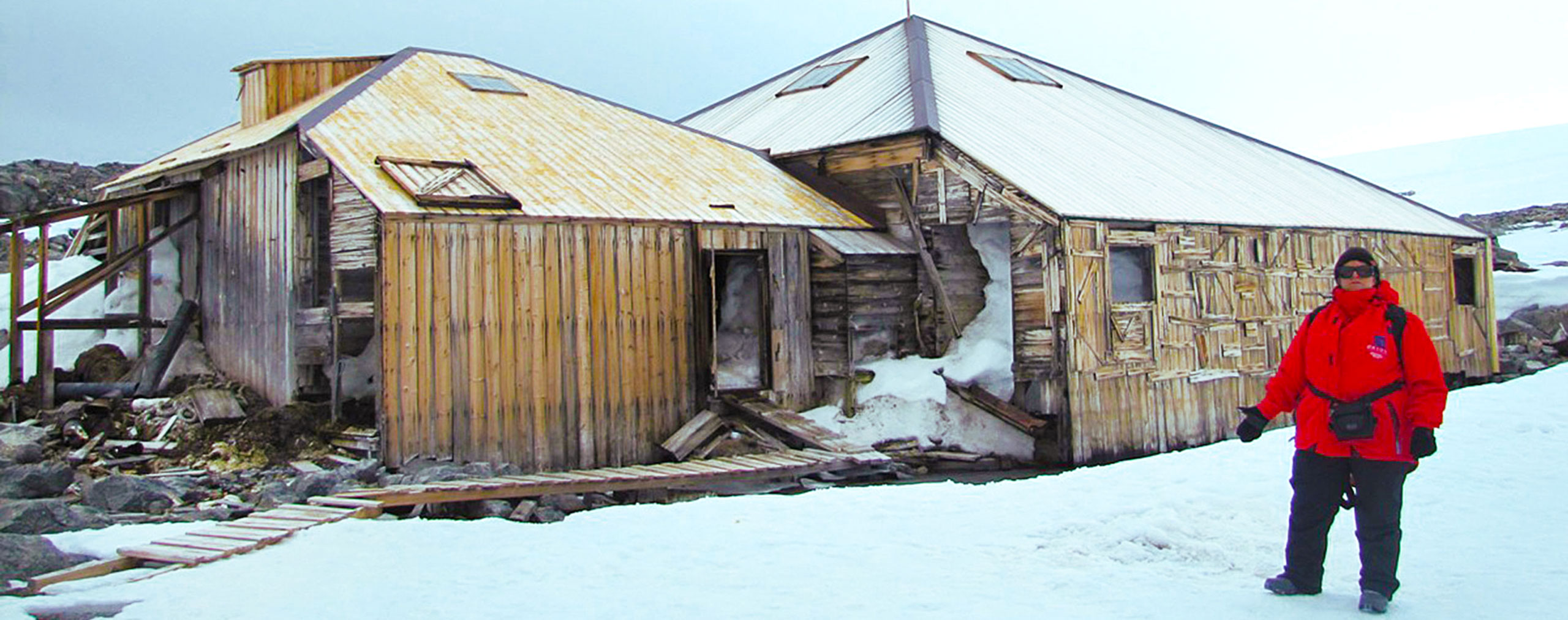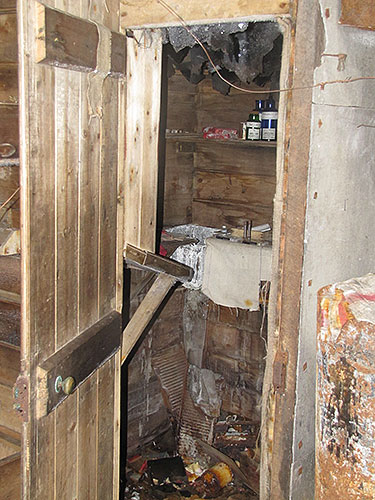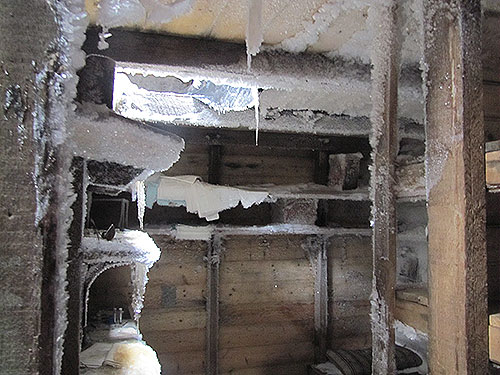
Mawson’s Huts
There are two parts to the building erected on the windiest place on Earth. The first room is the workroom where lots of preparations were made and projects were undertaken. The second is the living quarters holding the men and their belongings in safety and relative warmth for the duration of their stay.
Entering the main hut is by ducking down through the snow-piled doorway, Watch your head on the way in. The workroom is relatively bare with shelves and alcoves around the walls. Despite the snow and ice that now inhabit the room, there are strategically placed piles of modern equipment here so that the Conservation team has their materials to hand as they work. This is an important Archaeological site and items are catalogued and assessed as they are uncovered and exposed.
The Living room, though now covered knee deep in a blanket of thick icy dirty snow and decorated with the most delicate ice crystals, is much the same as it was when the expeditioners left it back in 1914.
There is the acrid and comforting smell of old dry wood, of magazines and books unread for 100 years, of the warming dampness of semi-melting snow and ice (produced by all of us visitors) combing with the faint musky animal odour of burnt blubber. Breathing in fills your lungs with the Aroma of History. It is an emotional experience.
The famous “Hyde Park Corner” of the room, their briefing place, has the name written on the rafters, next to the bunk of Belgrave Ninnis and Xavier Mertz, Mawson’s sledging companions who died on the ice that last trip. History lives in this room…
 We see Frank Hurley‘s Darkroom next to his bunk, marked with his own initials. In fact, each member of the expedition has his name on his bunk. As we visit, we touch nothing. No need for us to disturb the peace and awe of this place.
We see Frank Hurley‘s Darkroom next to his bunk, marked with his own initials. In fact, each member of the expedition has his name on his bunk. As we visit, we touch nothing. No need for us to disturb the peace and awe of this place.
The men of the Australian Antarctic Expedition came from diverse occupations and various parts of the world, to a place so isolated and so far from civilization that there could never be any hope of rescue, should there need to be one. They came to do a job, in the cause of science and for King and Country. So determined, so committed as to endure the often cyclonic isolation and barely livable low temperatures of this barren landscape, which came to be known as the “Home of the Blizzard.
Their wooden hut, designed with the help of Sir Douglas Mawson, took a few weeks to erect, having first to blast into the bedrock to make foundations. Bolted down and at last laden with all the supplies brought from the Aurora, the team moved in to its now small living space, ready to face the long, dark, sunless winter.
 A Bunk for each man, named and decorated by him, only Sir Douglas, as leader could claim an extra space, a buffer against the enclosed and confined area. It was a place to plan and think.
A Bunk for each man, named and decorated by him, only Sir Douglas, as leader could claim an extra space, a buffer against the enclosed and confined area. It was a place to plan and think.
The stove kept the hut warmish, staving off the onslaught of freezing wind and interminable cold, the acetylene assembly providing artificial light. Dinner was at the big table in the middle of the room.
And all around us (the modern explorers) the everyday tools and equipment, the leftover clothing, the books and journals, the unopened food supplies, the ghosts of seals and penguins — shadows of the past — tried to communicate their stories to us, if only we would listen.
